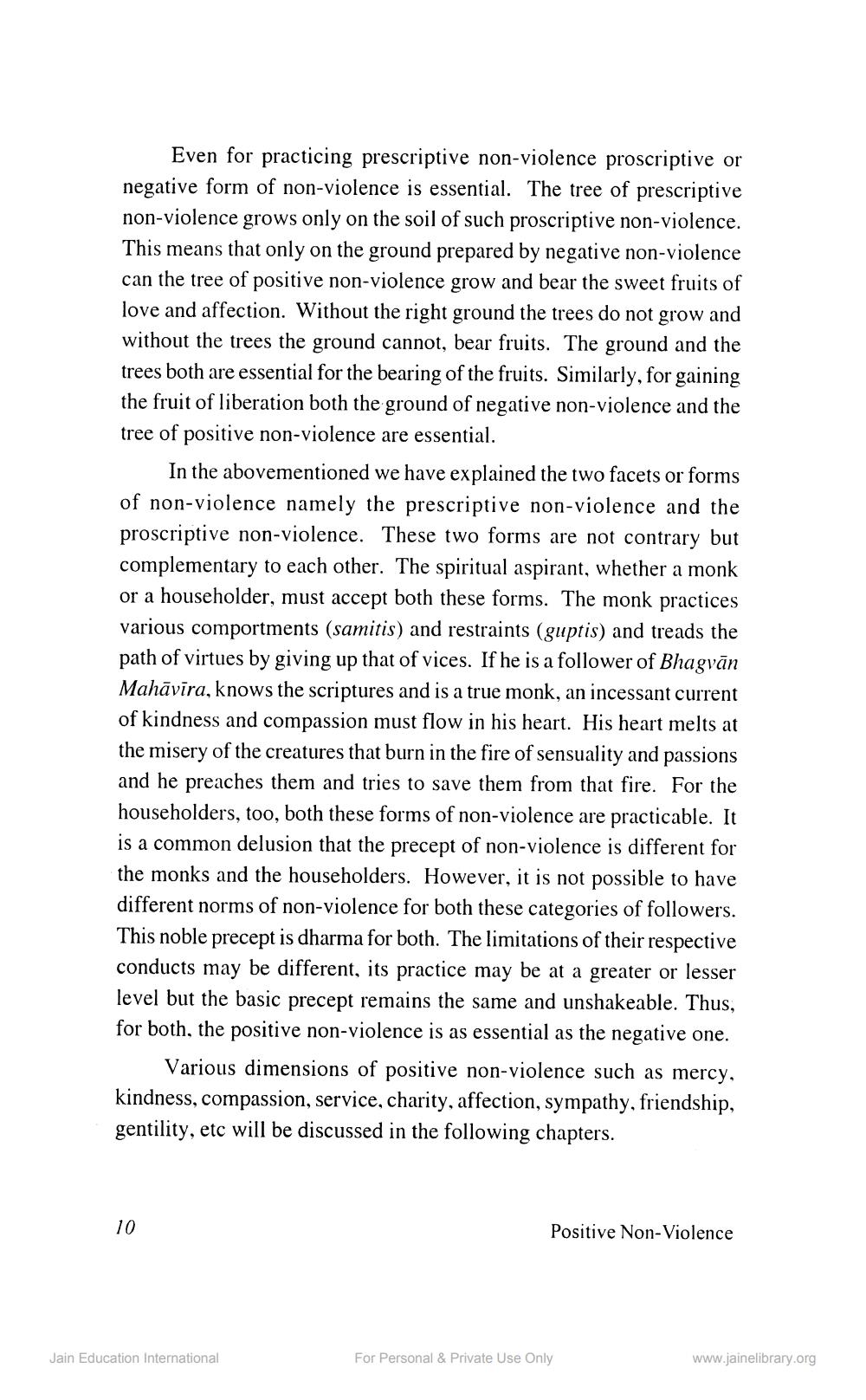________________
Even for practicing prescriptive non-violence proscriptive or negative form of non-violence is essential. The tree of prescriptive non-violence grows only on the soil of such proscriptive non-violence. This means that only on the ground prepared by negative non-violence can the tree of positive non-violence grow and bear the sweet fruits of love and affection. Without the right ground the trees do not grow and without the trees the ground cannot, bear fruits. The ground and the trees both are essential for the bearing of the fruits. Similarly, for gaining the fruit of liberation both the ground of negative non-violence and the tree of positive non-violence are essential.
In the abovementioned we have explained the two facets or forms of non-violence namely the prescriptive non-violence and the proscriptive non-violence. These two forms are not contrary but complementary to each other. The spiritual aspirant, whether a monk or a householder, must accept both these forms. The monk practices various comportments (samitis) and restraints (guptis) and treads the path of virtues by giving up that of vices. If he is a follower of Bhagvān Mahāvīra, knows the scriptures and is a true monk, an incessant current of kindness and compassion must flow in his heart. His heart melts at the misery of the creatures that burn in the fire of sensuality and passions and he preaches them and tries to save them from that fire. For the householders, too, both these forms of non-violence are practicable. It is a common delusion that the precept of non-violence is different for the monks and the householders. However, it is not possible to have different norms of non-violence for both these categories of followers. This noble precept is dharma for both. The limitations of their respective conducts may be different, its practice may be at a greater or lesser level but the basic precept remains the same and unshakeable. Thus, for both, the positive non-violence is as essential as the negative one.
Various dimensions of positive non-violence such as mercy, kindness, compassion, service, charity, affection, sympathy, friendship, gentility, etc will be discussed in the following chapters.
10
Positive Non-Violence
Jain Education International
For Personal & Private Use Only
www.jainelibrary.org




